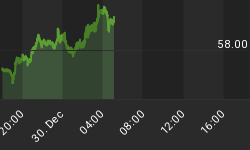It’s just over a month since the European Central Bank (ECB) announced that it was slamming the brakes on its bond-buying spree that pumped an estimated €2.6 trillion ($3 trillion) of stimulus funds into EU economies over a period of four years. Yet, increasingly lackluster economic data coming from the bloc will severely test its resolve to gradually pare-back the crisis-era stimulus.
The European Commission has just slashed 2019 growth forecasts for the region by nearly a third, citing global uncertainties and trade tensions for its gloomy outlook. The EC has delivered a downbeat report that has lowered GDP growth projections for the broader EU area to 1.5 percent from 1.9 percent previously, while also cutting growth forecast for the 19-nation euro-area economy to just 1.3 percent from a 1.9 percent-clip projected in November.
The commission has warned that a sharper-than-expected slowdown in China’s economy, as well as the ongoing uncertainties surrounding Brexit, will only serve to make the outlook even worse. China is the EU’s second-biggest trading partner after the United States.
Germany, Italy the main laggards

(Click to enlarge)
The commission lowered growth projections for 27 of the bloc’s 28 member states, with Greece being the only exception.
More worryingly, the region’s largest economy, Germany, was one of the nations that suffered the heaviest cuts. Berlin had earlier projected that its economy would expand 1.8 percent in the current year—the latest prognosis calls for just 1 percent growth. Economy Minister Peter Altmaier has mainly pinned the blame on what he calls "external economic field" including trade tensions and fears of a no-deal Brexit.
Related: Tech Giants Lead Renewable Push
Truth be told though, a big part of the malaise is domestic as highlighted by the nation’s weakened auto industry. Germany’s dominant car industry has been struggling to adjust to new emissions standards and contracted during the second half of 2018. It’s feared that the industry will take longer than expected to recover as stakeholders take time off to ponder their roadmaps.
The situation will not be helped by a looming end to the “fat years”. Finance Minister Olaf Scholz recently warned that the era of higher-than-expected tax receipts is over which will likely curtail government spending. Since 2014, Germany has been in the enviable situation of collecting taxes faster than it can spend them thanks to a robust economy, high wages and record-low levels of unemployment.
Meanwhile, Italy’s downward revision was the starkest. The debt-ridden nation is expected to record GDP growth of a mere 0.2 percent in the year, by far the lowest of any EU state. That’s a far cry from earlier projections of 1.2 percent, with the cut coming just two months after Rome and Brussels managed to strike a compromise over the nation’s deficit target that will make it harder for the populist coalition to continue borrowing. Related: Brexit Reality Hits Home As Corporate Exodus Accelerates
Italy’s sovereign debt sits at a staggering 130 percent of GDP, the fourth highest in the world and more than double the 60 percent of GDP limit set by the EC. The debt burden has already trickled down to the lower ranks with Italian banks now sitting on the largest pile of non-performing loans in the region making them a top target for the shorts.

(Click to enlarge)
Source: Bloomberg
Silver lining
The commission has warned that clouds on the horizon are getting darker. For one, much of the eurozone weakness can be directly attributed to fading support from external environments. The report notes that the risk of abrupt fiscal tightening in the U.S. starting 2020 remains high; the Chinese economy appears to slowing down more sharply than anticipated while emerging market remain highly vulnerable to sudden changes in global risk sentiment.
There’s a silver lining though. ECB’s goal to keep inflation just under 2 percent in the medium-term looks achievable with the euro-area 2019 forecast of 1.4 percent coming in below the earlier projection of 1.8 percent. The EU economy is expected to start improving gradually from the second half of 2019 and continue the uptrend in 2020. The EC sees the region recording GDP growth of 1.6 percent in 2020, slightly lower from its earlier target of 1.7 percent.
By Alex Kimani for Safehaven.com

















